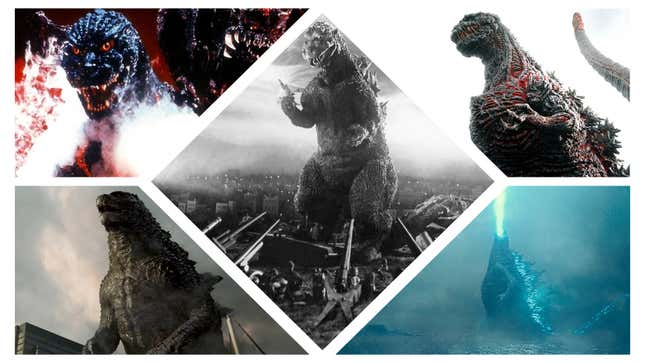
Across four eras—Showa, Heisei, Millenium, and Reiwa—Godzilla has helped chart the course of both a country and a culture, speaking to the fears, hopes, and most fantastical dreams of the Japanese people. Toho’s Godzilla films have captivated the world for nearly 70 years, leading to a proliferation of giant monster (kaiju) films, inspiring a number of American blockbusters, while Hollywood has also successfully managed to develop its own take on the character (after an initial misfire).
From rubber suits to CGI, the Godzilla franchise has pushed visual effects forward, leading to some of the most incredible spectacles put on film. Beyond film, Godzilla has tackled television, video games, and comic books, truly proving himself to be King of the Monsters. In celebration of the upcoming release of Toho’s 33rd Godzilla film, Godzilla Minus One, and the current Hollywood-produced Monsterverse series, Monarch: Legacy Of Monsters on Apple TV+, The A.V. Club ranks every Godzilla film, from the worst to the best.